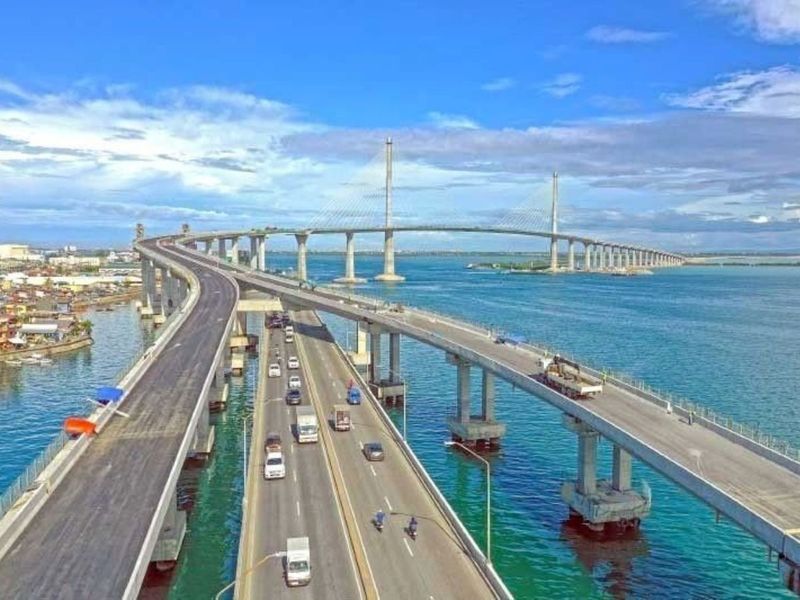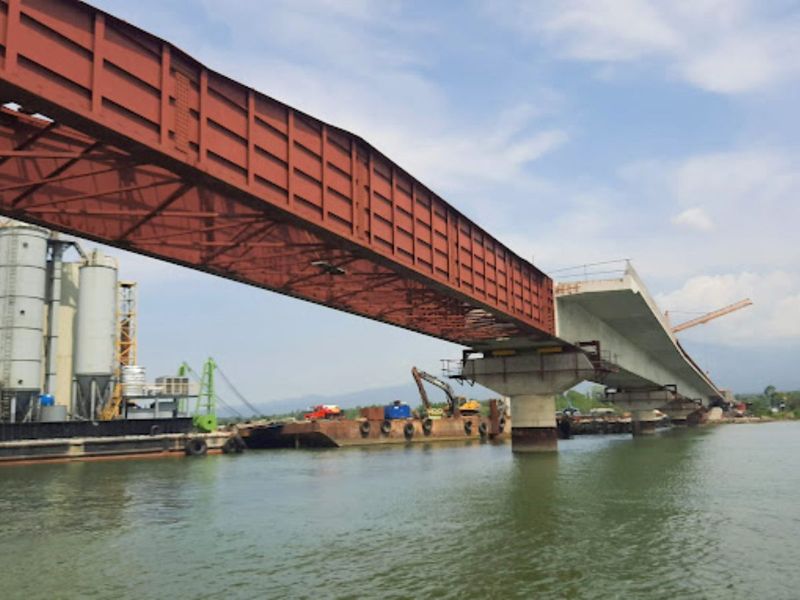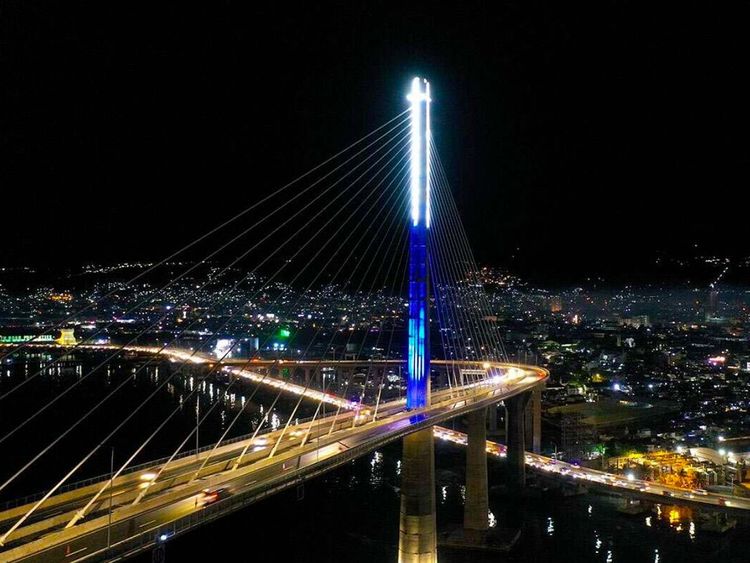
Manila: The Cebu-Cordova Link Expressway (also known as CCLEX), the first expressway in central Philippines, is currently the country's longest bridge. It's also the tallest. It's built with private money.
The Php33-billion link connects Cebu, the country’s second-largest city, to Cordova town on the neighbouring Mactan Island, home of the Mactan International Airport.

For decades, San Juanico Bridge (length: 2.164 km), built at a cost of $21.9 million in the 1970s, was the Asian country’s longest water-spanning bridge, stretching from Samar to Leyte across the San Juanico Strait in the country's east. Its longest length, at 192 metres, is a steel girder viaduct built on reinforced concrete piers, and its main span is of an arch-shaped truss design.
In April 2022, CCLEX overtook San Juanico as the country’s longest bridge. It may not be long before CCLEX is overtaken by another megalink project.

CCLEX length: 8.9km
- Project cost: Php30 billion ($604 million)
- Completion: April 2022
With a length of 8.9 km, CCLEX is four times longer than San Juanico. It is also the country's tallest bridge.
The CCLEX was first proposed in 2014 in the area vulnerable to super typhoons. Among the challenges for builders: the bridge had to withstand winds of up to 250km/h. To study its structural response, a wind tunnel test was conducted.
The real-life test came 2021, at a time when two main bridge pylons, which stand 145 metres high in Cebu’s Mactan Channel, were already completed.
In December that year, Cebu was hit by the Category 5 typhoon “Odette” (international code "Rai"), with gust speeds of 240km/h recorded) which devastated parts of Visayas and Mindanao.
Bridge unharmed by supertyphoon
It left the bridge unharmed. The $604-million project is spearheaded by Cebu Cordova Link Expressway Corp, whose parent firm is Metro Pacific Tollways Corp. (MPTC), led by Filipino infrastructure titan, billionaire Manny Pangilinan.
A team composed of Spain-based Acciona Construccion, S.A., and Philippine-based firms First Balfour and DM Consunji (DMCI) built it, with Danish engineering firm Cowi providing technical assistance and owner’s engineer services.

Another challenge: to keep the Mactan Channel and Port of Cebu City open to navigation during construction.
How the builders managed this is a result of impressive planning, manoeuvres and precision. The teams had erected 100 tonnes of heavy post-tensioned precast concrete girders of the approach viaducts, using a 120m-long launching gantry, operated remotely at 50 metres above the existing coastal road, and supported on the tall piers of the viaducts. All these happened amid the COVID-19 restrictions and a hit by a super typhoon.
Today, up to 40,000 vehicles use the link every day, cutting the travel time between Mactan and Cebu International Airport by 40 minutes, and relieving congestion on the existing inter-island crossings.
But It may not be long before CCLEX’s record is broken. The current Marcos administration is currently ramping up infrastructure projects under a new "Build Better More" mantra, taking the "Build-Build-Build" drive under the Duterte government to a higher pitch.
Bataan-Cavite Interlink Bridge length: 32km
- Project cost: Php175.6-billion ($3.2 billion)
- Completion date: mid-2028
The 32 kilometre Bataan-Cavite Interlink Bridge (BCIB), is set to cross Manila Bay.
Unlike CCLEX, which was bankrolled by private money through a public-private partnership deal, the upcoming long-span bridge will be built using government money, under the Department of Public Works and Highways (DPWH) Unified Project Management Office (UPMO).
With a price tag of Php175.6-billion ($3.2 billion), BCIB is more than 3.5 times longer than CCLEx, with four lanes and a length of 32.15 kilometers, stretching from Mariveles town in Bataan province to Naic, Cavite province.
It will be the most expensive government-funded infrastructure project, second only to the under-construction Php488 ($8.9 billion) Manila Subway, due for completion in 2029.
Idea for BCIB was first floated in the late 1990s, but the project feasibility studies were initiated and completed under the Duterte administration.
The DPWH is reportedly now ramping up geo-testing following engineering design works completed in the first quarter of 2023. Geological elements of the site, both surface and below (marine geophysical and geotechnical studies), are being thoroughly researched and must be completed, according to a media statement by Senior DPWH Undersecretary Emil Sadain.
The Manila-based Asian Development Bank (ADB) and the Beijing-based Asian Infrastructure Investment Bank (AIIB) are slated the bankroll the project, though a loan.
Once operational, the BCIB is expected to cut travel time between the two provinces to just 45 minutes from the current five hours and help transform the regional economies of Cavite and Bataan through improved connectivity, economic opportunities, and jobs.
If the project does proceed, it will be the biggest bridge project in the Philippines and the most iconic legacy of President Ferdinand Marcos Jr’s administration.

Bored piling works on the seabed for the 32 pylon, a structure that provides support for the bridge, are all completed, a government update states.
Present connectivity between Ozamis City/Tangub City and Tubod through Roll-On, Roll Off (RoRo) vessel is about 2-1/2 hours. Land travel over a distance of 100 km is up to 2 hours.
Once completed, the Php7.37-billion ($141 million) bridge spanning 3.77 km, will reduce travel time to only 7 minutes from 2.5 hours between the two sides.
It is expected to be 90 per cent complete by December 2023 and may be open to vehicular traffic by June 2024, say officials.
The goal is to have having the first traffic cross the bridge by first half of 2024, said Senior Undersecretary Emil Sadain of the Department of Public Works and Highways.
Once completed it will become the longest water-spanning bridge in the country, and will also be the longest bridge in Mindanao.
Another long-span bridge project under DPWH UPMO Operation is the the 3.9-kilometer Samal Island-Davao Bridge.
A network of bridges spanning 32-kilometees is also being spearheaded by the DPWH to will connect Panay, Guimaras and Negros islands.
The public works department is also setting up the 3.3-kilometer Cebu-Mactan 4th Bridge.















